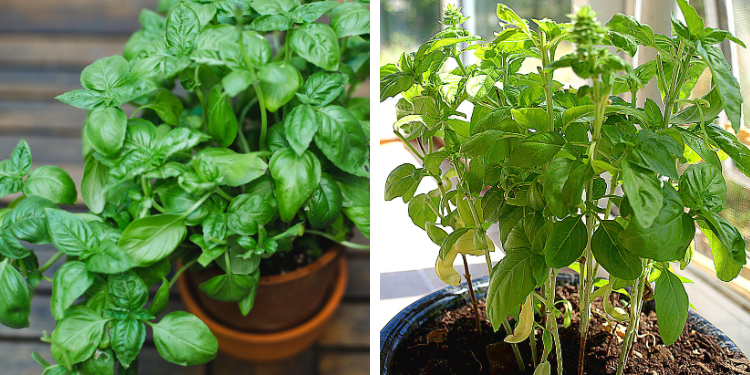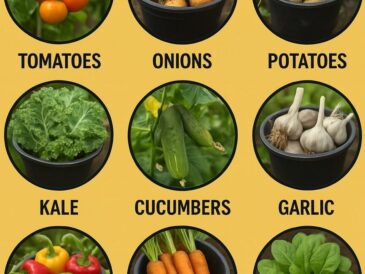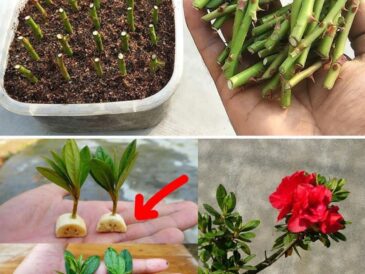Basil is one of the most rewarding herbs to grow in containers, offering an abundance of fresh, fragrant leaves that can be used in countless culinary dishes.
Whether you have a sunny windowsill, balcony, or patio, growing big, healthy basil in a pot is entirely achievable—even for beginners.
With the right care, basil can thrive in containers and provide a generous harvest throughout the growing season.
In this step-by-step guide, you’ll learn exactly how to grow lush, bushy basil in pots, from choosing the right variety to harvesting for maximum yield.
Why Grow Basil in a Pot?
Container gardening offers several advantages for growing basil:
- Mobility: You can move pots to catch the best sunlight or bring them indoors in cool weather.
- Control: Pots allow for better soil control, drainage, and moisture management.
- Accessibility: Perfect for small spaces like balconies, patios, or kitchen counters.
Basil grows quickly and thrives in warm weather, making it a perfect candidate for potted cultivation. With the right setup, you can enjoy large, healthy basil plants in just a few weeks.
Step 1: Choose the Right Basil Variety
There are many basil varieties, and some are better suited for containers than others.
For large, flavorful leaves and vigorous growth, consider the following types:
- Genovese Basil: Classic Italian basil with large, aromatic leaves.
- Sweet Basil: A popular variety for pesto and cooking.
- Lettuce Leaf Basil: Broad, crinkled leaves and mild flavor.
- Spicy Globe Basil: Compact, round plant ideal for smaller pots.
- Thai Basil: Strong, licorice-like flavor with purple stems.
For growing big basil in pots, Genovese and Sweet Basil are top choices due to their size and productivity.
Step 2: Select the Right Container
Basil develops a moderate root system, so it needs room to grow. A container that is too small will stunt growth and limit leaf production.
- Container size: Use a pot that is at least 10–12 inches deep and 8–12 inches wide per plant.
- Material: Terracotta, ceramic, or plastic pots are all suitable, but ensure they have drainage holes.
- Drainage: Good drainage is essential. Avoid containers without holes, or root rot can occur.
If you’re growing multiple plants, use a larger planter box or separate individual pots to give each plant adequate space.
Step 3: Use the Best Soil for Basil
Basil needs loose, nutrient-rich soil that drains well while retaining moisture. Regular garden soil is too heavy for container gardening.
- Soil mix: Use a high-quality potting mix that contains peat moss or coco coir, perlite, and compost.
- pH range: Basil prefers slightly acidic to neutral soil (pH 6.0–7.0).
- Nutrients: Mix in organic compost or a balanced slow-release fertilizer to support early growth.
Avoid compacted or clay-based soils, which retain too much moisture and reduce root aeration.
Step 4: Plant Basil Properly
You can grow basil from seeds or starter transplants from a nursery. Both methods work well in containers.
From seed:
- Fill the pot with moist potting mix.
- Sow seeds ¼ inch deep, spacing them about 3 inches apart.
- Lightly cover with soil and mist to keep moist.
- Basil seeds germinate in 5–10 days when temperatures are between 70–85°F.
From transplant:
- Gently remove the basil plant from its nursery pot.
- Loosen roots and plant in the container at the same depth it was growing.
- Firm the soil and water well after planting.
Always place the container in a sunny spot immediately after planting.
Step 5: Provide Full Sunlight
Basil loves heat and thrives in full sun. The more light it receives, the bushier and more productive it will become.
- Sun requirements: Provide 6–8 hours of direct sunlight daily.
- Indoors: Place pots near a south-facing window or use a grow light for 12–14 hours per day.
- Outdoors: Place the container in a sunny, sheltered location protected from strong wind.
If your basil appears leggy or pale, it’s likely not getting enough light.
Step 6: Water Consistently and Correctly
Basil enjoys evenly moist soil, but overwatering is a common mistake that leads to root rot and fungal diseases.
- Watering frequency: Water when the top inch of soil feels dry. This may be daily in hot weather.
- Method: Water the base of the plant rather than the leaves to reduce disease risk.
- Drainage check: Make sure water flows freely from the bottom of the pot. Empty saucers after watering to avoid soggy roots.
Inconsistent watering causes leaf curl, yellowing, and reduced growth, so develop a watering routine.
Step 7: Fertilize for Big Growth
continue reading in page 2





